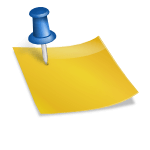This week students are starting the final sections of their research projects and Scientific Reports. Our younger students are also preparing to set up a Class Museum.
Foundation/Prep/Kindy to Year 3
 Our youngest students (Unit F.3) also complete a Scientific Report. By becoming familiar with the overall layout and skills associated with the scientific process at a young age, by the time students reach high school the process will be second-nature and their skills fine-tuned. This week teachers discuss how Science helps us find out things about the world. Teachers and students are also collecting material to form a Class Museum. Students in integrated, multi-age classes (Unit F-1.3) and Years 1 (Unit 1.3), 2 (Unit 2.3) and 3 (Unit 3.3) are undertaking a similar set of activities this week, however, in increasing depth as appropriate for each year level, and with different subject matter, according to the class focus. By Year 3 (Unit 3.3), students are writing full sentences and even short paragraphs, focusing on a topic in the local history of their community or capital city, in their Scientific Report.
Our youngest students (Unit F.3) also complete a Scientific Report. By becoming familiar with the overall layout and skills associated with the scientific process at a young age, by the time students reach high school the process will be second-nature and their skills fine-tuned. This week teachers discuss how Science helps us find out things about the world. Teachers and students are also collecting material to form a Class Museum. Students in integrated, multi-age classes (Unit F-1.3) and Years 1 (Unit 1.3), 2 (Unit 2.3) and 3 (Unit 3.3) are undertaking a similar set of activities this week, however, in increasing depth as appropriate for each year level, and with different subject matter, according to the class focus. By Year 3 (Unit 3.3), students are writing full sentences and even short paragraphs, focusing on a topic in the local history of their community or capital city, in their Scientific Report.
Years 3 to 6
 Students in integrated Year 3/4 classes (Unit 3.7) and those in Year 4 (Unit 4.3), 5 (Unit 5.3) and 6 (Unit 6.3) are concentrating on analysis of data this week, for the final stages of their Scientific Report. It is expected that students have gathered information on their chosen research topic on an aspect of Australian history for the term by now and are analysing this information in order to answer their research questions and start to draw conclusions about their topic. This week’s lessons focus on pulling everything together towards a a full, final report. Teachers are able to quickly identify which students need extra guidance by referring to the Student Workbook, which tracks each student’s progress on a weekly basis. Thus feedback, intervention and additional support can be offered timeously and before the term marks are collated, allowing each student the chance to achieve their best.
Students in integrated Year 3/4 classes (Unit 3.7) and those in Year 4 (Unit 4.3), 5 (Unit 5.3) and 6 (Unit 6.3) are concentrating on analysis of data this week, for the final stages of their Scientific Report. It is expected that students have gathered information on their chosen research topic on an aspect of Australian history for the term by now and are analysing this information in order to answer their research questions and start to draw conclusions about their topic. This week’s lessons focus on pulling everything together towards a a full, final report. Teachers are able to quickly identify which students need extra guidance by referring to the Student Workbook, which tracks each student’s progress on a weekly basis. Thus feedback, intervention and additional support can be offered timeously and before the term marks are collated, allowing each student the chance to achieve their best.
 Each year level focuses on a different aspect of Australian history and enough topics are supplied to ensure that each student is working on new information, even in multi-age classes. Instead of finding a continual stream of new, novel HASS units, or repeating material some students have covered before, OpenSTEM’s Understanding Our World® program allows teachers to tailor the same units to look different for each year level, thus ensuring that students are practising their skills on new material, as well as covering year-level appropriate skills and content. By the time students are in Year 6, they will have covered the full suite of Australian History up to the 20th century, as well as having studied each continent in turn. Civics and Citizenship and Economics and Business for part of this integrated whole and do not have to be taught separately. They will be ready to enter high school with a full suite of honed research and problem-solving skills, as well as having covered the core material necessary.
Each year level focuses on a different aspect of Australian history and enough topics are supplied to ensure that each student is working on new information, even in multi-age classes. Instead of finding a continual stream of new, novel HASS units, or repeating material some students have covered before, OpenSTEM’s Understanding Our World® program allows teachers to tailor the same units to look different for each year level, thus ensuring that students are practising their skills on new material, as well as covering year-level appropriate skills and content. By the time students are in Year 6, they will have covered the full suite of Australian History up to the 20th century, as well as having studied each continent in turn. Civics and Citizenship and Economics and Business for part of this integrated whole and do not have to be taught separately. They will be ready to enter high school with a full suite of honed research and problem-solving skills, as well as having covered the core material necessary.


The material is much more interesting. When I discussed a topic later in the term, I found that the students…
Laura Davidson, Teacher